In this blog, we will be covering the Robotic Process Automation definition, some robotic process automation examples, its benefits, and how to pursue RPA.
Let’s get started with the meaning of RPA. Robotic process automation (RPA) revolutionized the landscape for several sectors by producing excellent outcomes and providing dependable solutions. RPA is a programmatic software tool or software robot that executes a series of operations in accordance with predetermined business requirements or standards.
The robot works with the computer in a manner that is equivalent to how a human would and automates the completion of the predefined set of procedures for a number of tasks.
The software robot will eventually be able to perform any action a person would normally accomplish on a computer system using a keyboard, mouse, or even voice.
The common examples involve running software, signing in, and carrying out an operation such as sending an email, copying and pasting data, and more. Now let us dive into this topic to know why robotic process automation is important for modern businesses.
Robotic Process Automation & Digitalization
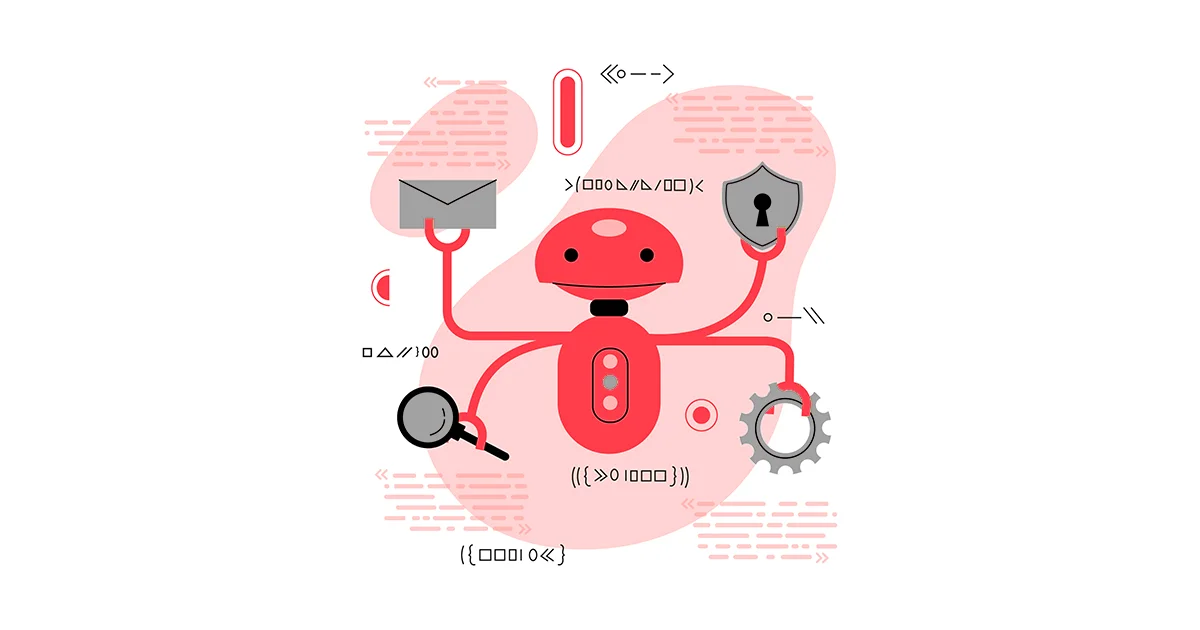
The significance of automation and reliance on technology is growing as businesses and operations adjust to the new standards. Modern businesses are now considering implementing a digital workforce to maintain business continuity and flexibility in difficult times.
While enabling businesses to operate around-the-clock and boosting productivity, profitability, and speed to technologies, hyper-automation solutions are still being adopted across industries, and they also change how the human workforce operates, enhancing the standard of work and job commitment.
On the other hand, you must be aware that Robotic process automation is not appropriate for too many company operations. The list will grow as more artificial intelligence is implemented and more types of robotic process automation are developed.
You should keep in mind that it’s not just a matter of getting rid of repetitive activities. It also involves using analytics tools and achieving the vision of complete automation while making semi-autonomous and autonomous decision-making in practice.
Now let’s examine the real meaning and goal of digital transformation and how robotic process automation fits into the picture.
The objectives should be innovation, the development of new value ecosystems, and the improvement of experiences across the spectrum. However, in practice, a lot of businesses are still focused on internal efficiency and cost-cutting objectives when it comes to digital transformation and most definitely robotic process automation.
Moreover, you also need to have a good amount of budget for the implementation of such a system. Companies that are only focused on cost reduction and efficiency without having a comprehensive digital transformation strategy and ecosystem approach will eventually fail in the long term.
How Robotic Process Automation Works
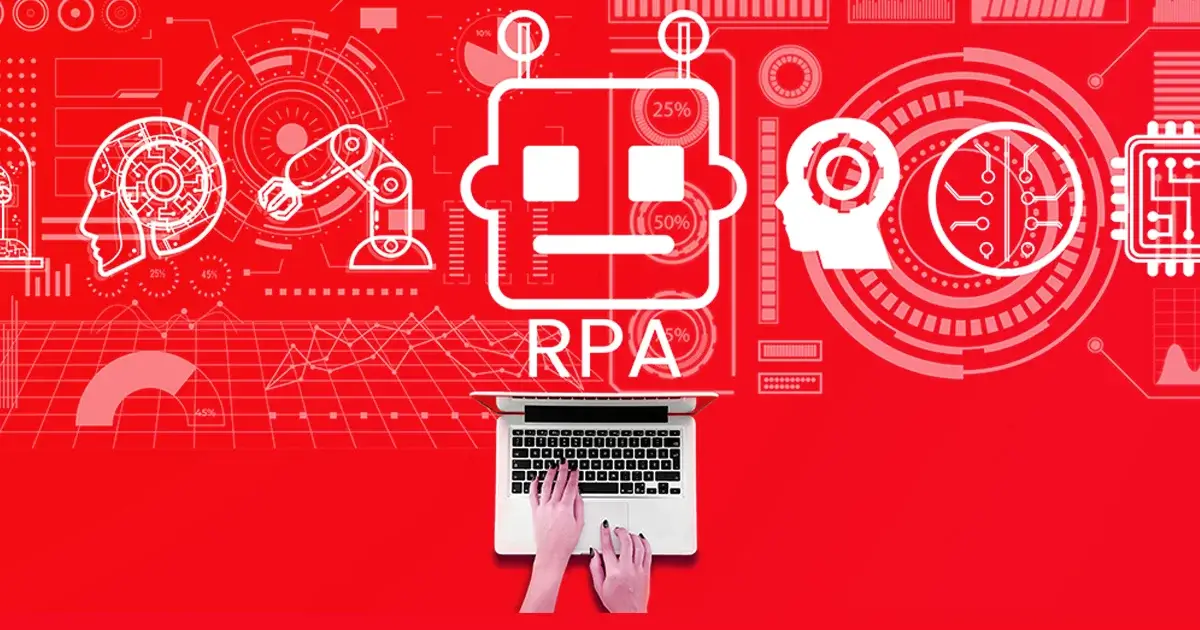
RPA is typically used to carry out routine, repetitive operations that are mainly transactional-based. Software robots’ transcendental properties are constrained since they are unable to simulate the human brain, which prevents them from understanding, observing, or speaking. They might, nevertheless, operate exactly as intended to deliver quick and error-free processing.
RPA can be used to automate tasks in two different scenarios: Attended Automation and Unattended Automation.
Attended Automation:
Generally, attended automation runs on the users’ computers and functions in accordance with the user. For example, in order to answer a customer’s inquiry, a traditional credit card service center worker would need to open 4 to 6 different applications or software.
The time it takes to open each application or software and search for the customer’s name, card, or phone number can take anywhere between 15 and 25% of the whole call time.
Based on client information, RPA or attended automation helps open these applications. The RPA can assist in recording the actions taken by the agent to deliver a better service to the customer. After the call is finished, the agent must document the activities of the action items to be fulfilled.
Unattended Automation:
Unattended automation, on the other hand, has little to no interaction with the user. The software robot is capable of reaching extremely high levels of productivity and scalability since it operates in the background around the clock.
For instance, the goal of a customer onboarding process is to gather and evaluate customer data in order to improve customer care and control risk. In this scenario, RPA can enable repeated rule-based procedures and tasks like data reconciliation and verification and email sending, e.g., sending email requests of missing documents.
RPA programs on the other hand are very user-friendly and simple to set up. Business users can also perform straightforward automation and its training may only take a few weeks to complete.
Moreover, the “Task recorder” is one of the additional features and functionalities that RPA offers. This feature helps to speed up the development cycle as it creates about 20 to 30% off codes automatically. The Task Recorder program will record the tasks performed by the user on the computer. RPA uses this recording to configure the software robot.
Benefits of Robotic Process Automation (RPA)
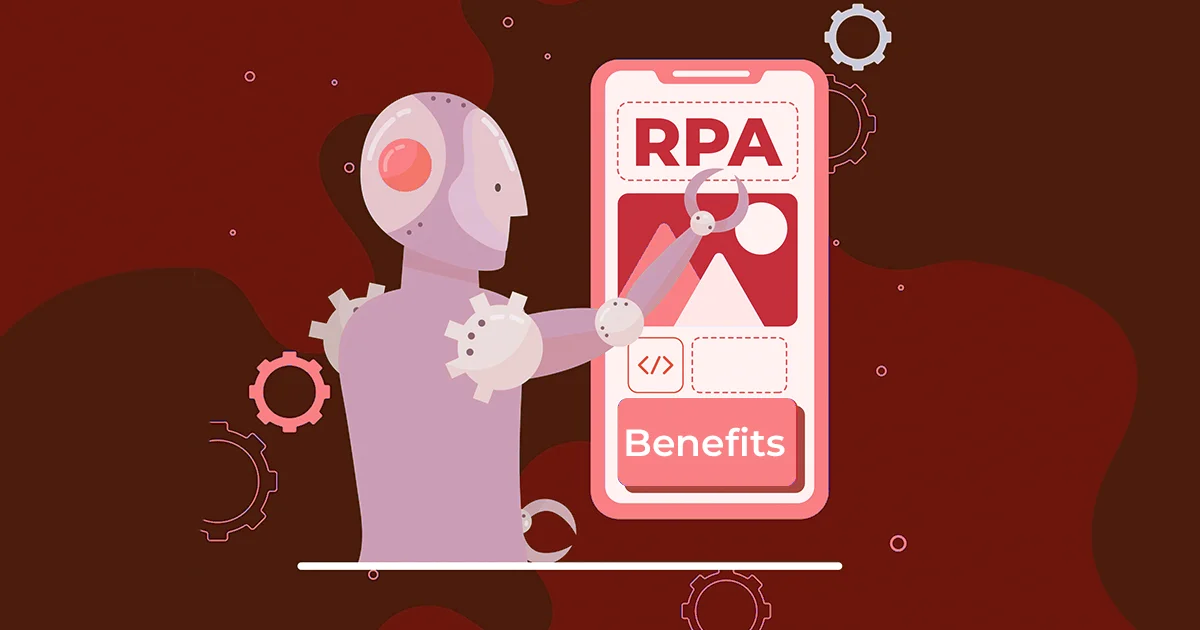
Following are some Robotic Process Automation benefits that you all should be aware of:
1) Robotic Process Automation Increases Productivity
The benefits of RPA automation are based on a straightforward idea. Let robots handle the activities that are complicated and let human workers focus on their areas of expertise.
Employees have significantly less time to dedicate to work that makes use of their expertise when they have to spend time on pointless operations like copying and pasting data between corporate platforms. Therefore, employees can do less in a day because manual activities take a lot of time and energy.
However, Now RPA has transformed this concept. Software robots can boost a team’s potential for completing work by 35% to 50% if they are configured properly for a process. They can also work more quickly, reducing data processing times by 30% to 50%.
On the other hand, you may easily do more with the same amount of time by delegating low-level and back-office work tasks to robots and humans.
2) Eliminate Errors
It is nearly impossible that human error will have no longer a role in some of your company’s most crucial workflows. Accounts payable errors sometimes result in actual, unanticipated expenses for a business. Your team might mistakenly duplicate invoices due to a transposed digit in a PO number, resulting in excessive payments for your business. When you automate, it’s possible to obtain 100% error-free data correctness.
3) Increase Effectiveness While Reducing Costs
Increased effectiveness is crucial for many reasons than just preventing people from spending too much time on monotonous activities. RPA tools combined with human labor result in lower costs. Think about implementing robots in a segment like accounts payable or receivable where employees routinely need to transfer data from many portals into your company’s business systems.
Eventually, processing costs decrease and per-employee output rises as a result of RPA’s accelerated processing speeds and reduces costly errors. Savings from these efficiency gains typically range from 25% to 50%.
4) Strengthen the Security Of Business Data
Business managers’ main worry regarding the possible usage of RPA tools is how it will affect operational risk. Management might be concerned about the security of these technologies given how regularly data leaks and breaches take place.
However, when your team carefully maintains and correctly sets RPA settings, the risk of server breaches is barely minimally there. To improve security, a well-designed and maintained solution should be employed.
RPA can be used to reduce the number of human interactions that organizations need to make while processing personal data in areas with strong privacy laws. Facilitating this pullback and limiting contact with sensitive data can help you achieve compliance and make the implementation of governance rules easier.
5) Gather Information for Critical Analytics
You have no idea about such technology, at least not until you start using your new robots to gather precise information regarding process effectiveness. The implementation of RPA frequently helps in the discovery of process flaws and areas in need of repair.
These loopholes show a lack of both human and software resources, and they frequently point to the need for sophisticated automation that goes beyond the capabilities of simple RPA software.
6) Grasp Opportunities for Growth
Robotic Process Automation has a distinct benefit in workflows with unpredictable volume. An organization might, for example, receive more orders during a particular season of the year. Without automation, the business might need to hire temporary help or assign personnel to other activities in order to handle the information. Robots can swiftly scale up or down to accommodate any volume of manpower.
7) Improve the Customer Service Process
RPA is becoming more popular in customer service, particularly where it combines with other technologies like AI-powered natural language processing. However, the main advantages in this field right now come from minimizing employee involvement in highly repetitive jobs.
Employees must dedicate a significant amount of time and focus to providing excellent customer service, which is a high-maintenance, high-commitment process.
Hence, with the help of RPA, employees can focus more on clients by spending less time on routine administrative activities. As a result, response times will increase, complaints will be lesser, and customers will be more satisfied with your business as a whole.
How RPA Fits Into Your Company’s Automation Strategy

RPA’s advantages demonstrate how important a role these technologies play in business. RPA has limitations, though. Every type of activity cannot be automated with it, and many businesses may find that they require additional support for more sophisticated solutions.
However, RPA can still serve as the backbone of your company’s entire strategy by offering initial possibilities and chances to get experience with these technologies.
A traditional organization has a variety of workflows. Now the question arises where and how can an RPA system fit into such workflows? Here are some examples of how these tools can reduce costs and boost staff engagement.
1) Human Resource:
In numerous HR scenarios, RPA is very helpful. Although only 29% of respondents to a poll by the Process Excellence Network named HR as a target area for RPA implementation, new use cases will increase that results.
Currently, some of the most potential uses include:
- Increased accuracy in monitoring and updating employee records
- Integrating employee data across various HR computer systems
- Improving the efficiency of onboarding of new employees
2) Finance:
One of the most practiced and developed forms of automation in the company may be RPA in accounting and finance. Robots have the potential to reduce pressure since departments require reliable data and are familiar with the difficulties associated with maintaining accounting procedures in high-volume organizations.
The primary financial areas that need automation are:
- Purchases with the intent to pay
- Records for reporting purposes
3) Information Technology
The benefits of RPA deployments can be seen by the IT department as well. The maintenance of current systems, help desk support, and identifying future enhancement prospects make up much of IT’s attention. RPA offers a dependable approach to escape the never-ending time crunch that IT frequently experiences.
Robots can help with important activities like running system backups and automating some help desk tasks. Your IT team will appreciate the chance to delegate work to robots, which may help with everything from resolving employee credential issues to providing automatic approvals for particular system requests.
4) Customer care
Have you ever thought about what resources are available to your customer care team when a consumer gives a call to your company seeking assistance? In more conventional setups, a customer care representative could have to manually log into various systems and retrieve a customer’s information, which could take several minutes.
It can take too long to find the information a caller needs, and capturing new data across numerous systems can make call times even longer.
All of these things prevent customers from receiving good customer service. On the other hand, your customer care people can rely on robots to extract information for them instantly with RPA.
Ultimately your customer representatives can provide more rapid assistance to callers since they have quick access to crucial information. They don’t have to struggle with outdated software because they can improve the results of each query.
5) Marketing and Sales
The volume of data that the sales team generates is astonishing. Although maintaining all that data in one place would seem impractical. Hence, properly set up RPA systems can help in the unification of sales data.
On the other hand, RPA may also contribute to lead assignment and evaluation guidelines, guaranteeing that the right workers always have access to qualified leads.
Moreover, the marketing team can create more thorough customer profiles due to the improved sales data insight provided by RPA unification. Using that information, marketing strategies that are more able to influence the target market may be created.
6) Managing Data
Due to the large amount of information that organizations handle, several data management duties are now time-consuming and depressing for workers. Therefore, these processes are highly suitable for automation.
Simple tasks like data validation and data filtering are easy for RPA systems to “learn.” RPA helps with data integration at the same time. Additionally, tools with optical character recognition capabilities can accurately organize documents into the right databases or transfer data from documents to recording software.
Types of Robotic Process Automation
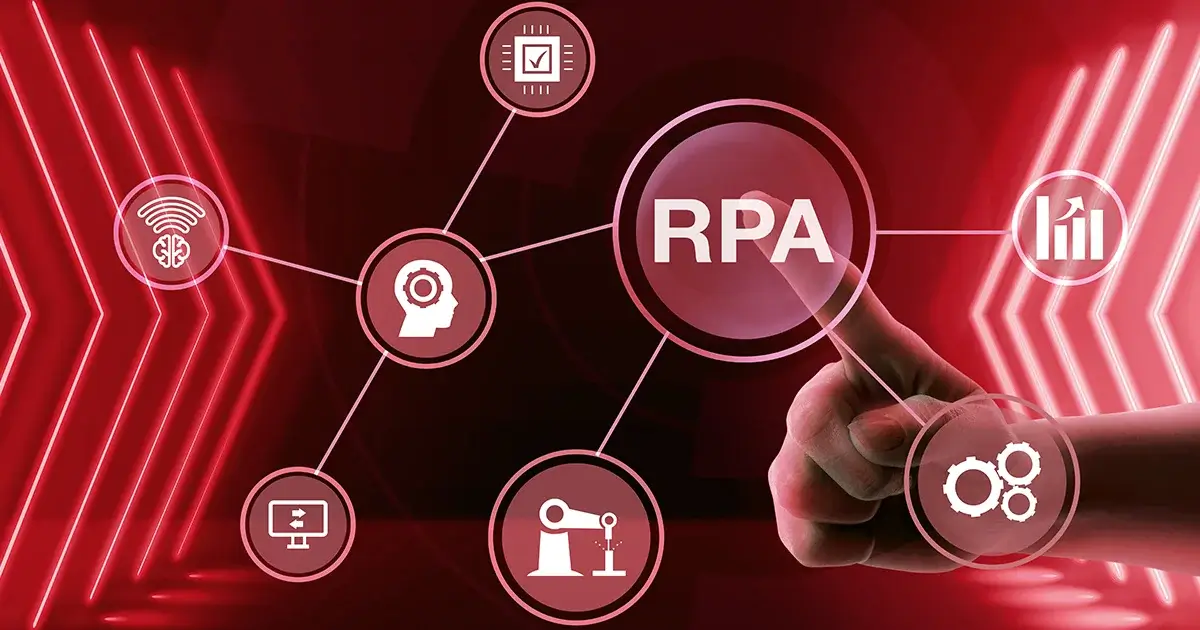
Businesses can use one of two primary types of robots to automate certain tasks.
Conventional Robotic Process Automation:
These are the computer software used for easy tasks that don’t call for intellect or decision-making. These bots are also known as rule-based systems since they need a set of guidelines on how to carry out a task, where to log in, what information to gather, and where to transmit it.
Robotic process automation typically refers to rule-based bots, which are efficient for straightforward jobs and scalable to thousands of automated operations.
Currently, conventional RPA can take care of almost any commercial task. Over 800 use cases for RPA are offered by some companies, such as Datamatics. This quantity suggests that the market for solutions is developed and that a bot for your business case is probably available.
However, this strategy has many drawbacks because conventional RPA software can’t handle human speech or automatically adapt to UI changes. The second type of RPA which is Cognitive RPA can be applied in such situations.
Cognitive Robotic Process Automation:
This is the most sophisticated type of RPA which is smart enough to read handwritten text, recognize spoken language, and identify images. This kind of RPA can be applied to the digitization of documents, the automation of customer communications, or the analysis of unstructured data.
Considering their impressive capabilities, cognitive robots must be specially designed for each use case, demanding the deployment of a team with expertise in artificial intelligence and machine learning to integrate cognitive robots into your workflow.
How to Pursue With Robotic Process Automation
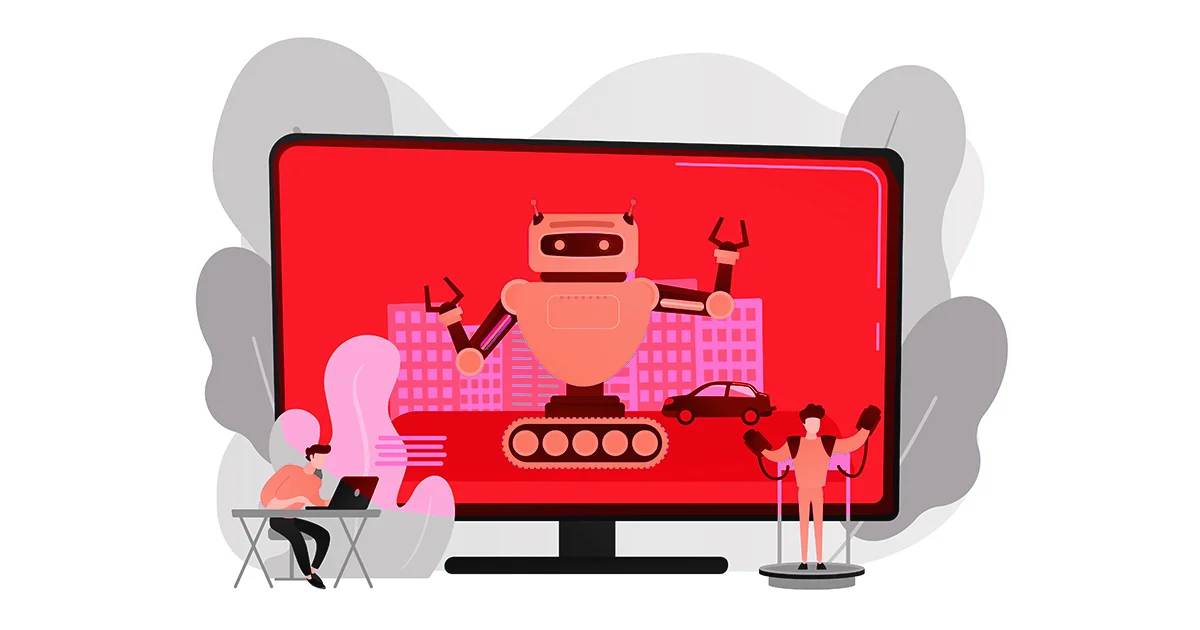
Below is a list of some initial steps to start with if you are thinking about using RPA software:
1) List and Describe the Repetitive Operations
You must choose business operations with straightforward goals like “collect data and place it into a destination folder” and defined stages. To make these processes more automatable, make sure that they are well-organized and don’t require a lot of in-process human decision-making.
It is preferable to select a few of those processes for shortlisting, then determine which of the selected processes requires the least amount of staff decision-making effort while still providing the most benefit.
For example, analyzing risk indicators or reporting on the most promising value segments may be the least probable options for automation, whereas entering your customers and their data into several back office systems may be more effective possibilities.
2) Decide which type of Automation you need
This step requires you to choose whether cognitive automation that satisfies your business needs or conventional automation would be the most feasible for you.
You have to decide earlier because some jobs involving digitizing documents, transcription of customer service calls, responding to consumer requests over the phone or in a messenger or etc. may require cognitive automation.
On the other hand, such jobs are difficult for the majority of conventional robotic automation systems. If so, it becomes essential to look for a software vendor with AI experience since cognitive bots need to be developed and configured specifically for the process flow.
3) Find an RPA solution & Go for Demo
The industry offers a wide range of pre-built solutions for conventional RPA jobs. Therefore, you must check out a few reliable ones and locate an RPA bot for your unique business system.
Once you find a perfect solution for you, it’s time for a demo to analyze whether the particular automation solution will meet your requirements or not.
You can better understand the particular benefits RPA software can offer to your business by starting small. If the demo is productive, you can scale the bots to automate additional procedures that are similar.
Furthermore, your operations teams will need to be trained in order to scale and you should encourage them to look for other manual procedures that may be further automated. And in order to improve and enhance your automation processes, you have to ensure that you are measuring your progress and evaluating performance.
4) Evaluate the expense of integration
You should be evaluating the expense of integrating an automation system in your organization. After evaluating the integration expense, you have to try to calculate the return on investment as well. For a conventional RPA, the majority of providers charge on an hourly basis. Therefore, by comparing the rise in productivity and accuracy for a particular task, you can determine the profitability of automation.
On the other hand, if your expenses exceed and your productivity graph is not moving upwards then this is a situation to worry about. Maybe you have chosen an inappropriate solution or you might not have implemented the automation solution properly. In such scenarios, you should try to figure out the solution as soon as possible without damaging the budget.
Conclusion
Robotic Process Automation is a facet of intelligent automation that solidly grounds your organization by providing chances to operate faster and smarter. With the relevant information about RPA which we have provided in this blog, you can start making financial savings and daily performance improvements for your organizations right away.
Even while RPA demands planning, effort, and consideration of the metrics for success, it is now relatively simple than ever to utilize its power.
It is recommended that you should eliminate outdated systems and develop a unified approach to business operations and data analysis by incorporating RPA into a comprehensive platform for intelligent automation.


